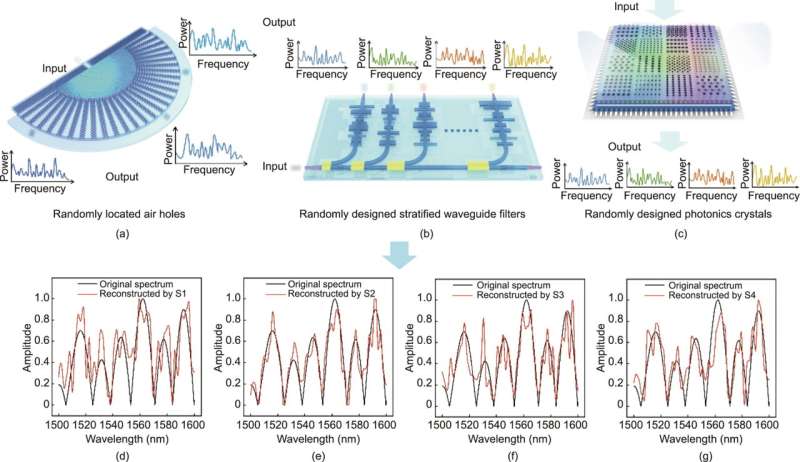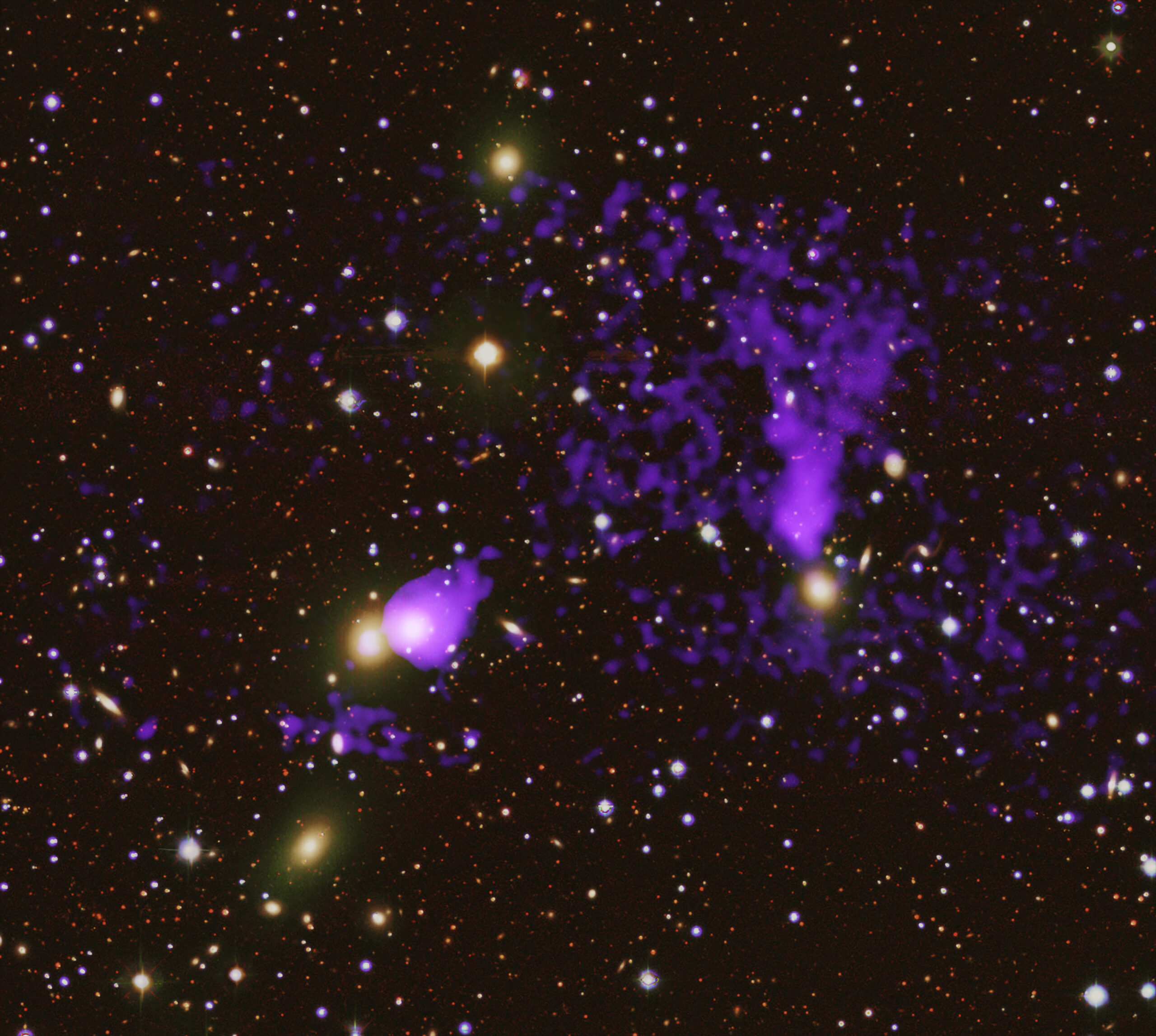(a–c) Examples of CSSSs utilizing disordered photonic chips with brute force and random selection of structural parameters. (d–g) Spectrum reconstruction by four randomly designed spectrometers (S1–S4). Credit: Ang Li et al.
In a study published in Engineeringresearchers from Nanjing University of Aeronautics and Astronautics and Zhejiang University have unveiled a pioneering approach to designing on-chip computational spectrometers, heralding a new era of high-performance and reliable integrated spectrometers. This innovative inverse-design methodology offers a dramatic leap forward in spectrometer technology, addressing longstanding challenges in performance and reproducibility.
Computational spectrometers have gained prominence as a promising solution for integrated spectrometry, a technology vital for applications ranging from environmental monitoring to medical diagnostics. These devices typically rely on disordered structures to enhance performance and resilience. However, the prevalent method of designing such spectrometers—using brute-force random approaches—has proven inefficient, leading to inconsistent and suboptimal results.
The research team, led by Ang Li and Yifan Wu, tackled these issues head-on by introducing a novel inverse-design approach that leverages bio-inspired algorithms. Traditionally, inverse design has optimized single photonic devices with straightforward performance criteria. This study marks a significant departure by applying inverse design to complex systems composed of multiple correlated components, thereby addressing intricate spectral responses.
The new design approach employs particle swarm optimization (PSO), an algorithm inspired by natural processes such as bird flocking. This bio-inspired technique, tailored specifically for computational spectrometers, was used to optimize a novel type of disordered photonic structure. Unlike previous methods that relied on scattering or absorption effects, this approach uses interferometric effects, which significantly reduce loss and enhance sensitivity.
The results are impressive. The newly designed spectrometer achieved a remarkable 12-fold improvement in spectral resolution compared to conventional methods.
Additionally, the cross-correlation between filters was reduced by a factor of four, leading to more accurate and reliable spectral analysis. The spectrometer’s performance was validated through its application as a spectrum analyzer for Fiber Bragg Grating (FBG) sensors, further showcasing its practical utility.
The introduction of this inverse-design method represents a major advancement in the field of integrated spectrometers. By overcoming the limitations of random design approaches, the new method provides a scalable, cost-effective solution for mass production. The integration of the spectrometer into a silicon photonics platform underscores its potential for widespread adoption, offering a pathway to high-performance spectrometry across various industries.
This development not only enhances the practicality of integrated spectrometers but also opens doors to new applications and improvements in optical technologies. The team’s success in applying PSO to complex systems could inspire further research and innovations in photonics, potentially leading to breakthroughs in other areas such as telecommunications and sensing technologies.
The research team’s work lays a solid foundation for future developments in computational spectrometry. With the new inverse-design approach, the field is poised to see advancements in both performance and reliability. As the technology evolves, it holds promise for transforming how to conduct spectral analysis and integrating these tools into diverse technological applications.
More information:
Ang Li et al, Innovative Inverse-Design Approach for On-Chip Computational Spectrometers: Enhanced Performance and Reliability, Engineering (2024). DOI: 10.1016/j.eng.2024.07.011
Citation:
Inverse-design method enhances performance and reliability of on-chip spectrometers (2024, September 27)
retrieved 27 September 2024
from https://phys.org/news/2024-09-inverse-method-reliability-chip-spectrometers.html
This document is subject to copyright. Apart from any fair dealing for the purpose of private study or research, no
part may be reproduced without the written permission. The content is provided for information purposes only.




